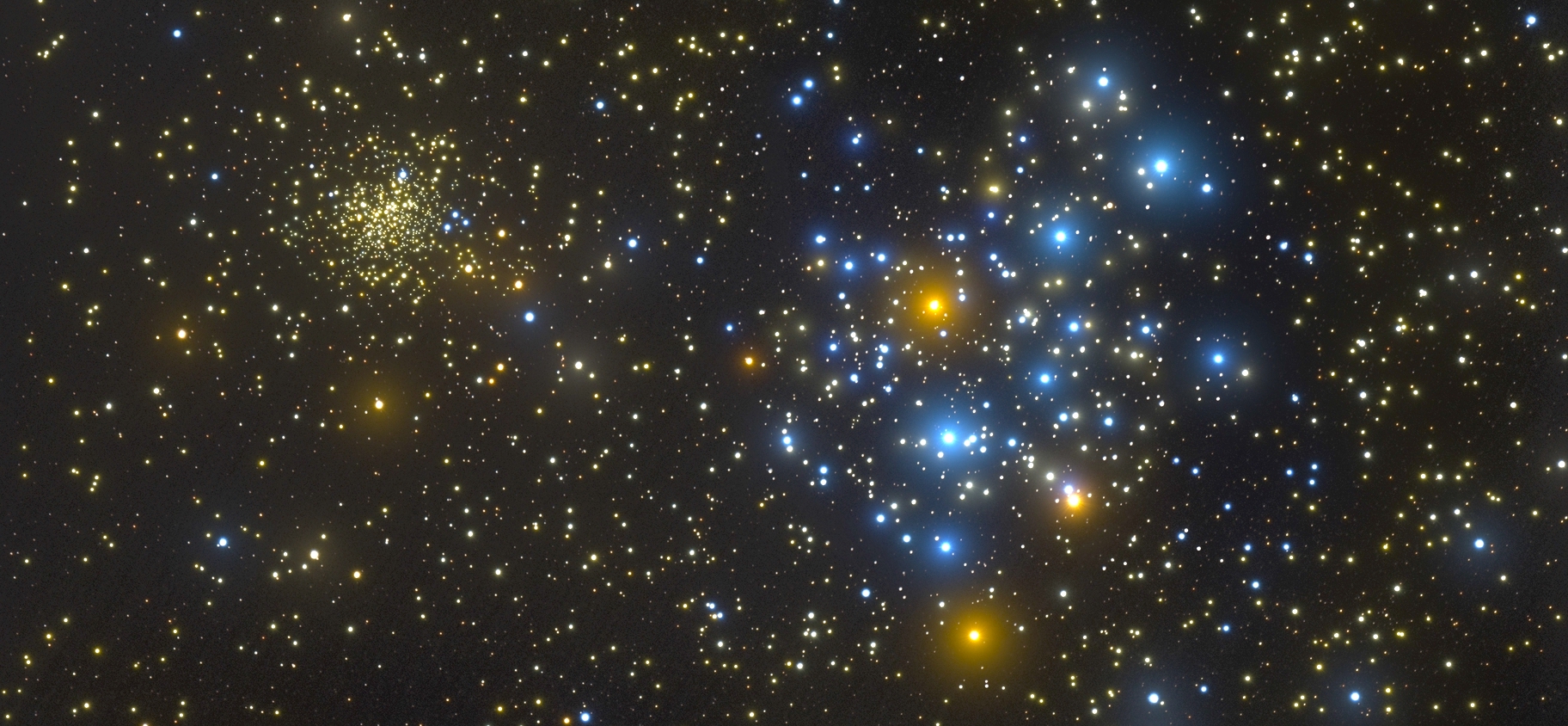
Messier 35 is a bright open cluster located at approximately 700~800pc, with an estimated age of ~150Myr. It has recently been observed by the Kepler K2 mission. The corresponding light curves shall allow the discovery of exoplanets, the study of asteroseismology, of variability, and many other important aspects of stellar evolution. The largest study to date - performed by one member of our team - dated from 2001, and we thought it was important to deliver a new and improved list of members.
Combining archival data from various ground based observatories with our own new data, we were able to derive accurate proper motions and multi-wavelength (grizJHK) photometry for almost 200,000 sources within 1 degree of the center of the cluster.
Unfortunately Messier 35 is a worst case scenario for kinematics study: its proper motion is slow, making it difficult to isolate members from field stars in a proper motion diagram. Additionally, its sequence overlap with the field sequence in almost all color-magnitude diagrams. We nevertheless were able to derive what we think is the best census available to date, based on the best datasets obtained over the past 18 years.
We now hope that the scientists analysing the K2 light curves will make a great harvest of information among Messier 35 members.

The figure above shows two color-magnitude diagrams (r, r-i) and (i, i-Ks) of Messier 35. The grey dots represent background and foreground sources. The color dots represent the high probability (>50%) members. The color scale represents the membership probability.